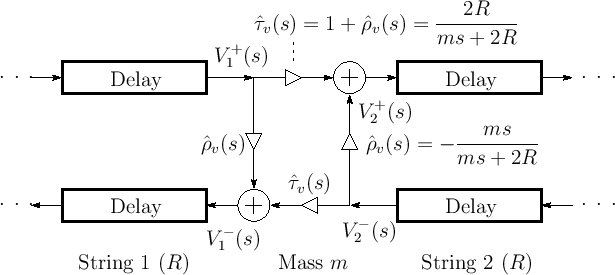
The velocity transmittance is readily converted to a force transmittance using the Ohm's-law relations:

Calculating it for the other direction as a check gives

Thus, while the reflectance of the mass toggles sign when changing from force to velocity waves, the transmittance of the mass is the same in both cases. We therefore have the force-wave scattering junction shown in Fig.9.19.
![\includegraphics[width=0.8\twidth]{eps/massstringdwmformforce}](img2156.png) |
Checking as before, we see that
![]() corresponds to
corresponds to
![]() , which means no force is transmitted through an
infinite mass, which is reasonable. As
, which means no force is transmitted through an
infinite mass, which is reasonable. As ![]() , the force
transmittance becomes 1 and the mass has no effect, as desired.
, the force
transmittance becomes 1 and the mass has no effect, as desired.